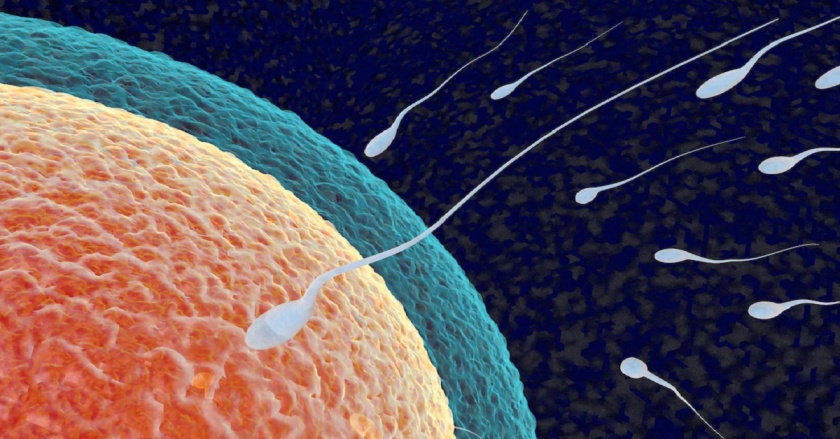The Chances of Getting Pregnant with IVF Treatment

Infertility affects approximately 10-15% of couples in the United States. With female infertility accounting for at least one-third of those cases. For some women, the best solution to infertility may be in vitro fertilization (IVF). But what are the chances of getting pregnant using IVF? Many factors determine how likely you are to get pregnant through IVF. And all of them should be discussed between you and your doctor before proceeding with treatment.
IVF success rates vary
According to the American Society for Reproductive Medicine (ASRM). As of 2016, the success rates for IVF were as follows: 39% for women under 35. 32% for women ages 35 to 37, 23% for women ages 38 to 40, 14% for women ages 41 to 42, and 6% for women 43 and older. These success rates are based on a woman’s age at the time of treatment and the number of embryos transferred. If she is younger than 35, there is an average 40% chance of achieving a live birth after one cycle of IVF; if she is between 35 and 37 years old, her chances drop to 30%; if she is between 38 and 40 years old, her chances drop again to 20%; if she is over 41 years old, her chances fall even further to 10%.
Assessing egg quality
One of the most important factors in determining the success of IVF treatment the quality of the eggs being used. Eggs that are healthy and have a good chance of fertilization are more likely to result in a successful pregnancy. There are a few ways to assess egg quality, including looking at the number of eggs produced, their size and appearance, and the results of genetic testing. Younger women tend to produce higher-quality eggs than older women, so if you’re still relatively young (in your 20s), it’s worth considering if this option might be right for you. But don’t wait too long: fertility decreases dramatically after age 35.
Women who get pregnant with IVF treatment also often experience fewer miscarriages than those who conceive without medical intervention, which can make all the difference when building a family. To maximize your chances of getting pregnant with IVF treatment, we recommend discussing what treatments will work best for you and starting as soon as possible.
Assessing sperm quality
The first step in any IVF treatment is to assess sperm quality. This involves looking at the count, motility, and morphology of the sperm. The higher the quality, the better the chance of success. There are also two types of embryos created during IVF: one that has more genetic material from the father and another that has more genetic material from the mother. When selecting which embryo to implant, doctors will go for whichever they believe will result in a healthier child.
Furthermore, having too many eggs fertilized can be dangerous as there may not be enough room in the uterus for all of them to grow. Overall, there is no set answer on how often you’ll get pregnant with IVF treatment, but it ranges between 20-40%; however, if you have tried unsuccessfully for 12 months or longer without getting pregnant, then your chances of getting pregnant decrease dramatically. On the other hand, if you’ve never had children before, then your chances are pretty good, with around an 80% success rate.
Monitoring ovulation
One way to improve your chances of getting pregnant with IVF is to monitor your ovulation. This can be done at home using an ovulation predictor kit or by tracking your basal body temperature. Your doctor may also recommend blood tests or ultrasounds to track your ovulation. By knowing when you are ovulating, you can time intercourse or insemination around that time to improve your chances of conception. When you have sex before and during ovulation, the man’s sperm has a better chance of fertilizing the egg. Therefore, it important to understand what type of fertility treatment will work best for you and get it started as soon as possible!
How the embryo develops in a natural cycle
In a natural cycle, an egg released from the ovary and travels down the fallopian tube. If sperm are present in the fallopian tube, they will fertilize the egg, and the embryo will begin to develop. The embryo will then travel down the fallopian tube and implant in the uterus. It takes about six days for an embryo to reach the uterus. When it reaches the uterus, it attaches itself to one of the uterine walls using finger-like projections called villi (or chimneys). Next, the embryo begins producing hormones that cause changes in the womb’s lining (endometrium). These changes include increased blood flow and production of uterine glands that produce cervical mucus. Which help keep sperm alive long enough to reach an egg.
When to start worrying about not conceiving
If you’re under 35 and have been trying to conceive for a year or over 35 and have been trying for six months, it’s time to consult with a best fertility doctors in Nairobi If you’re over 40, it’s time to consult a fertility specialist immediately. The older the woman is, the lower her chances are of getting pregnant using fertility treatments. According to the American Society for Reproductive Medicine (ASRM). Less than 10% of women aged 40-42 will become pregnant after six cycles of treatment. For women aged 43-44, less than 5% will get pregnant. After age 45, there is virtually no chance that an egg retrieval procedure would result in pregnancy. However, it’s worth noting that couples can still get pregnant naturally in these age ranges if they don’t use assisted reproductive technologies.




